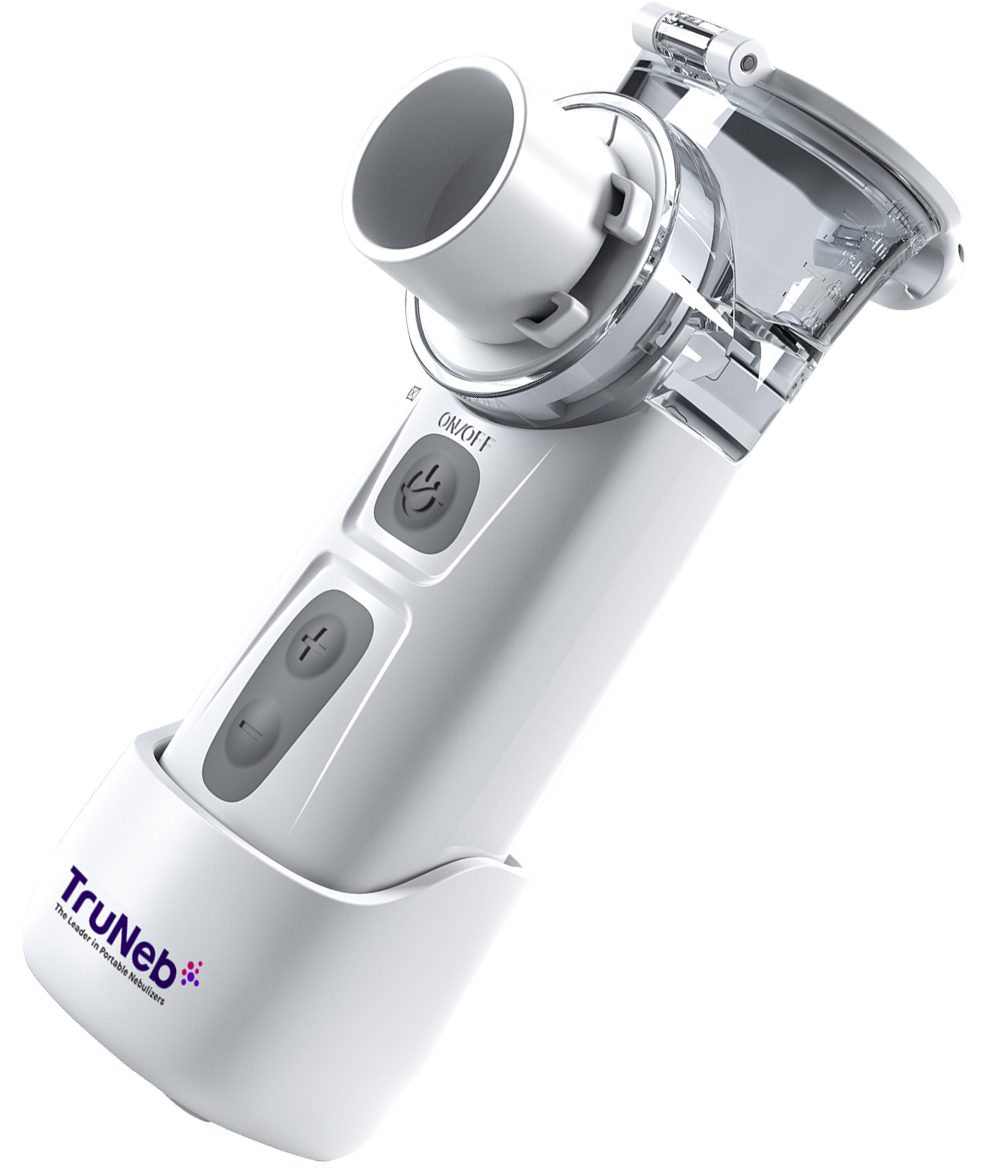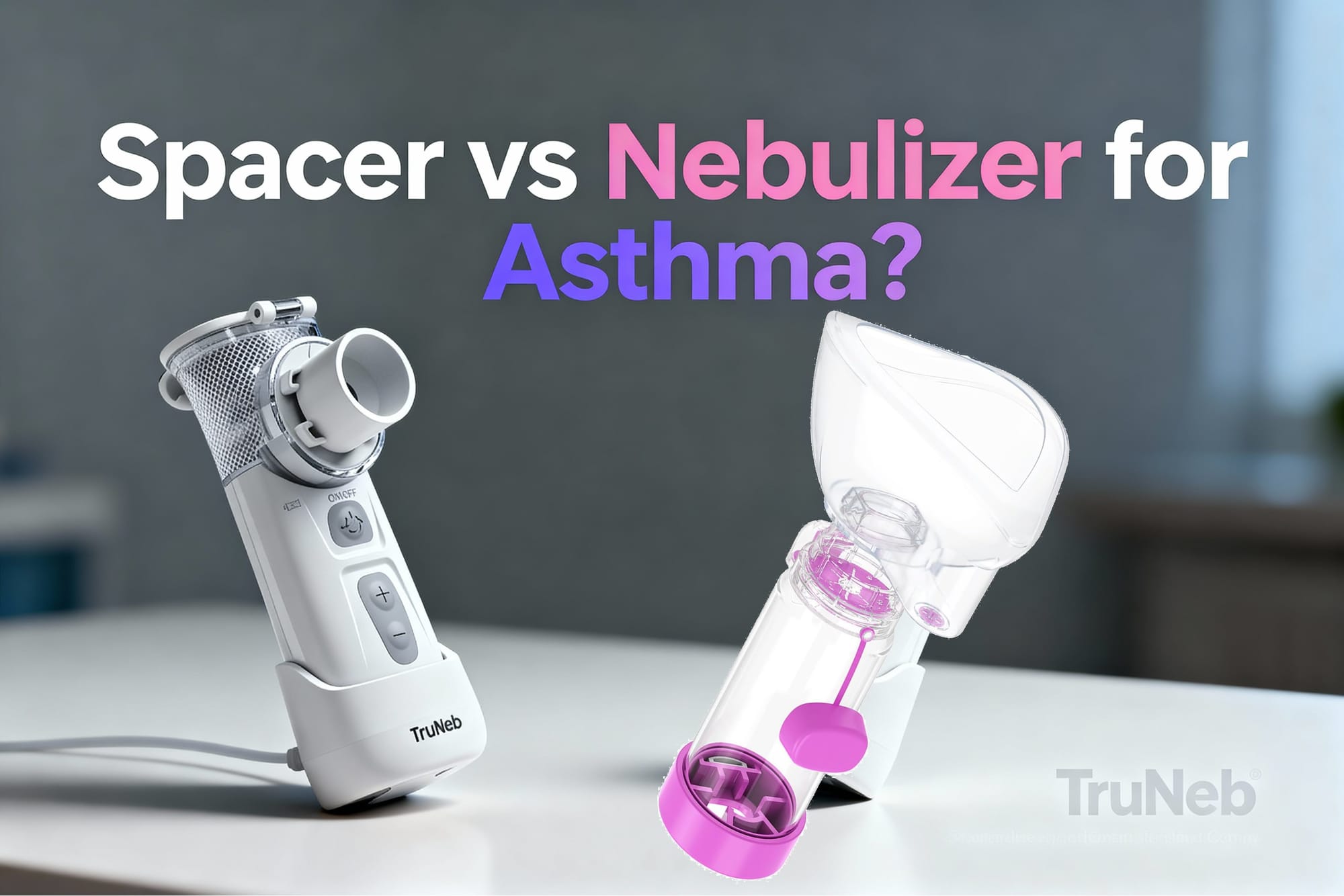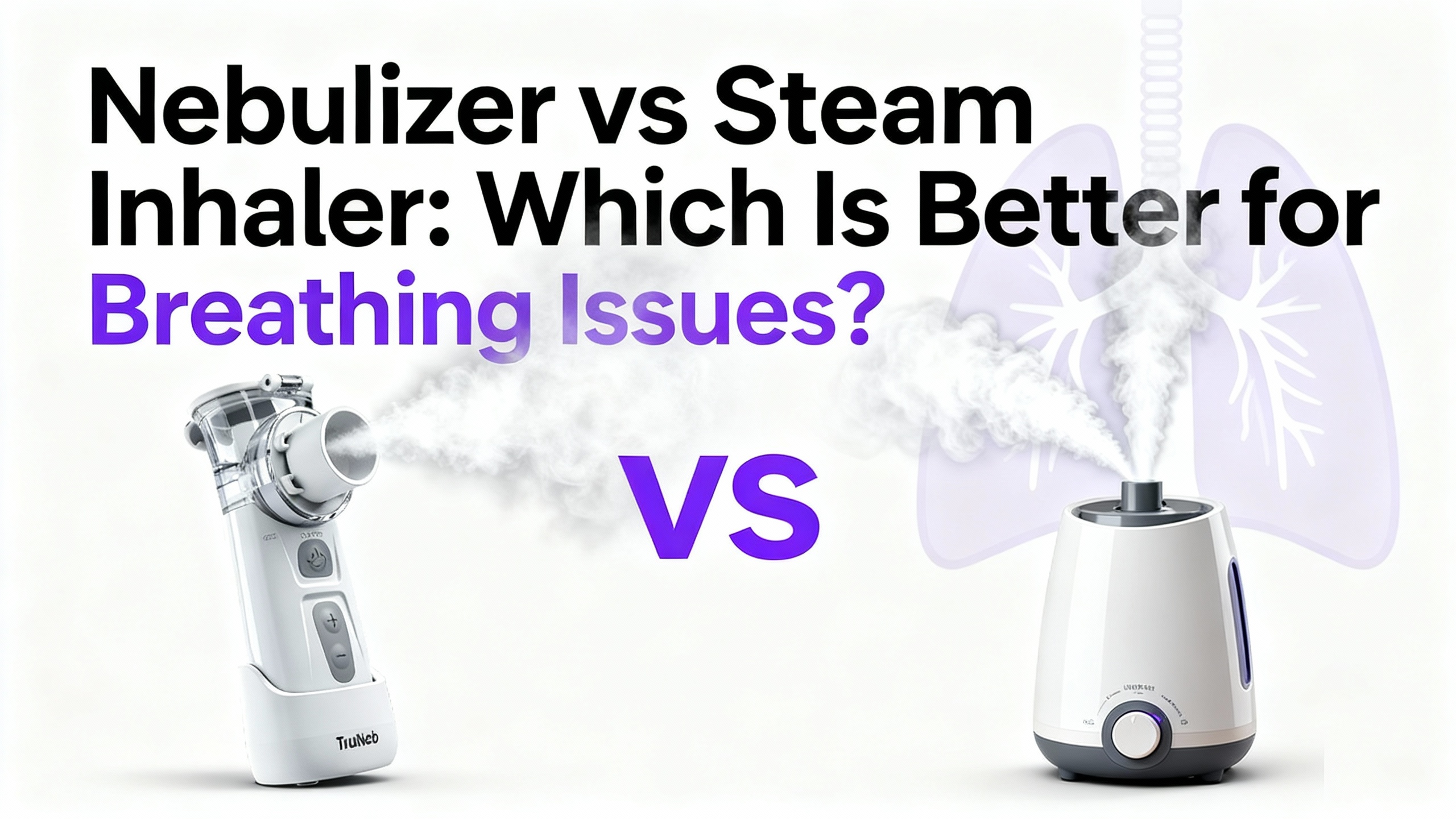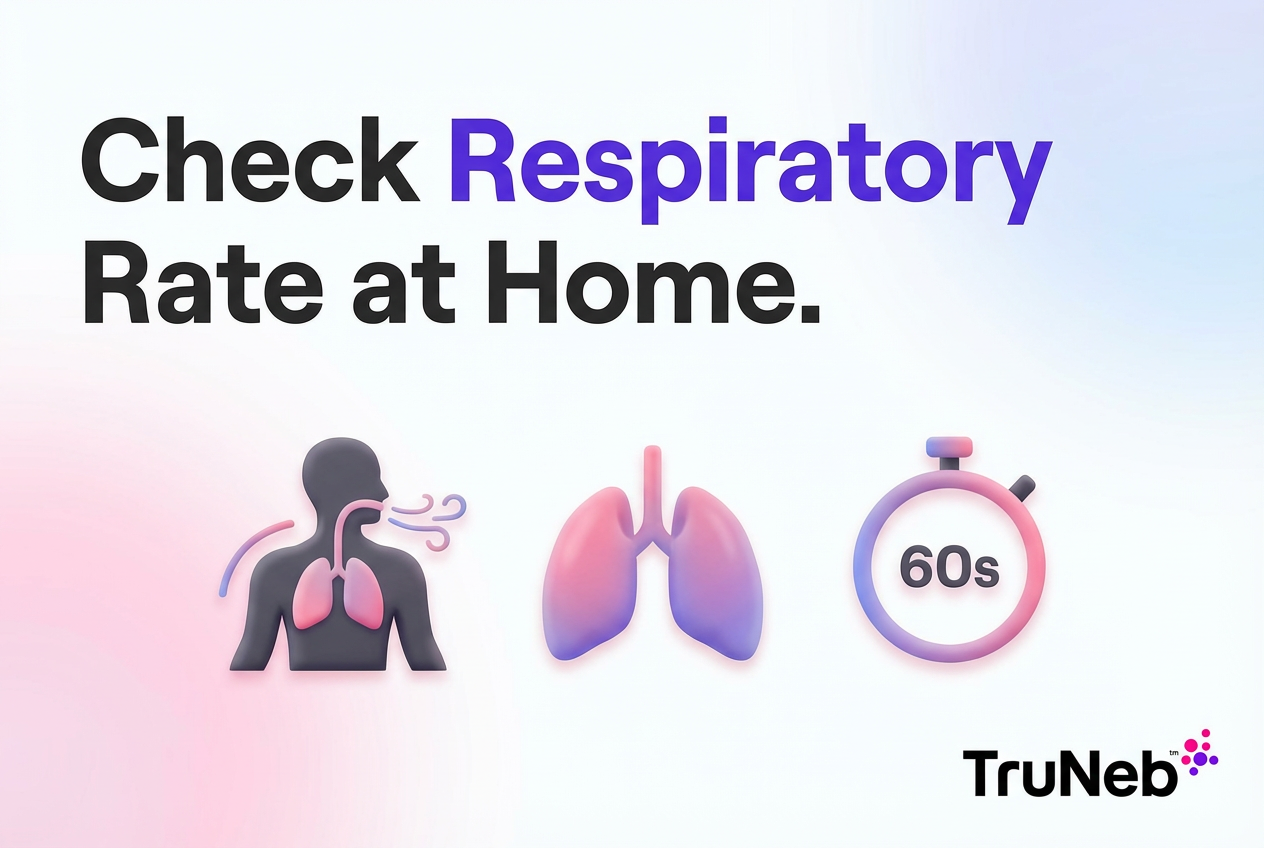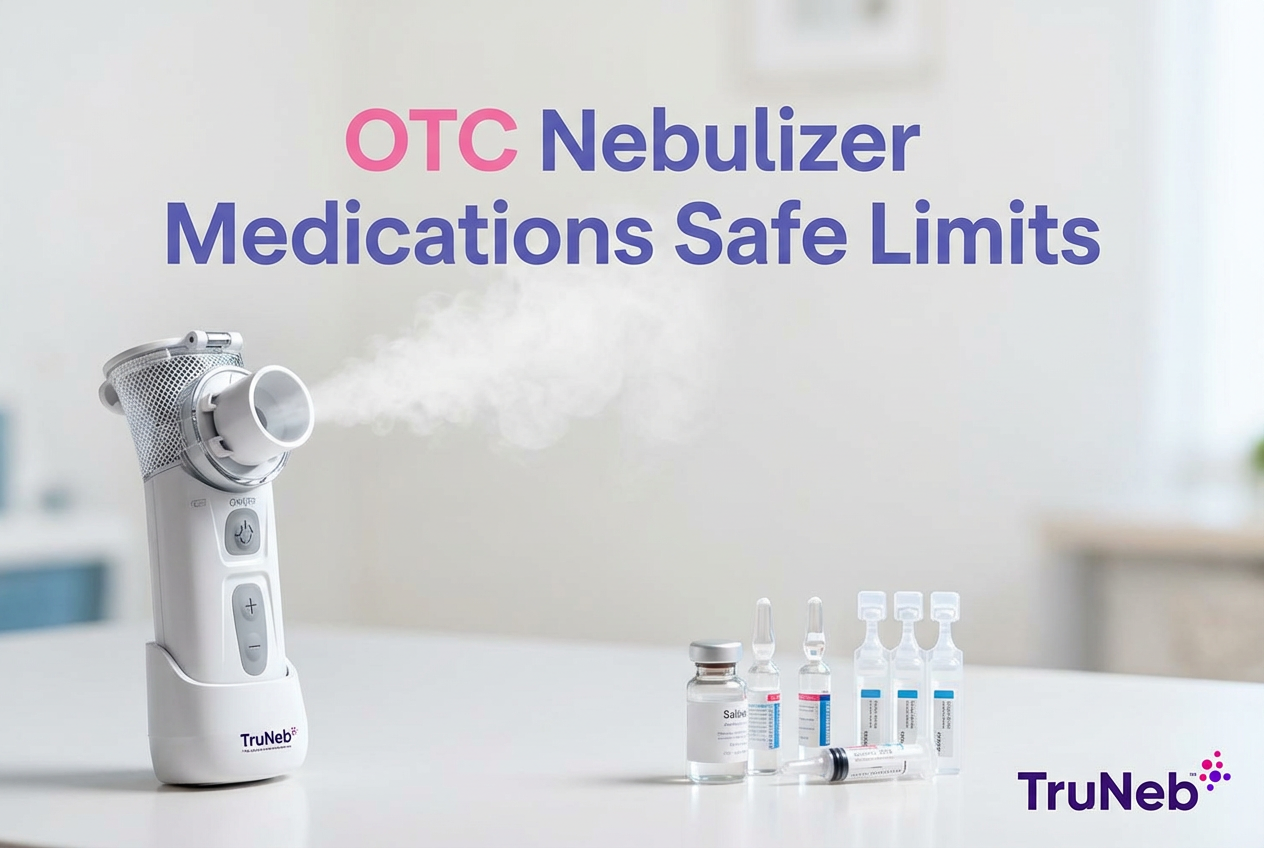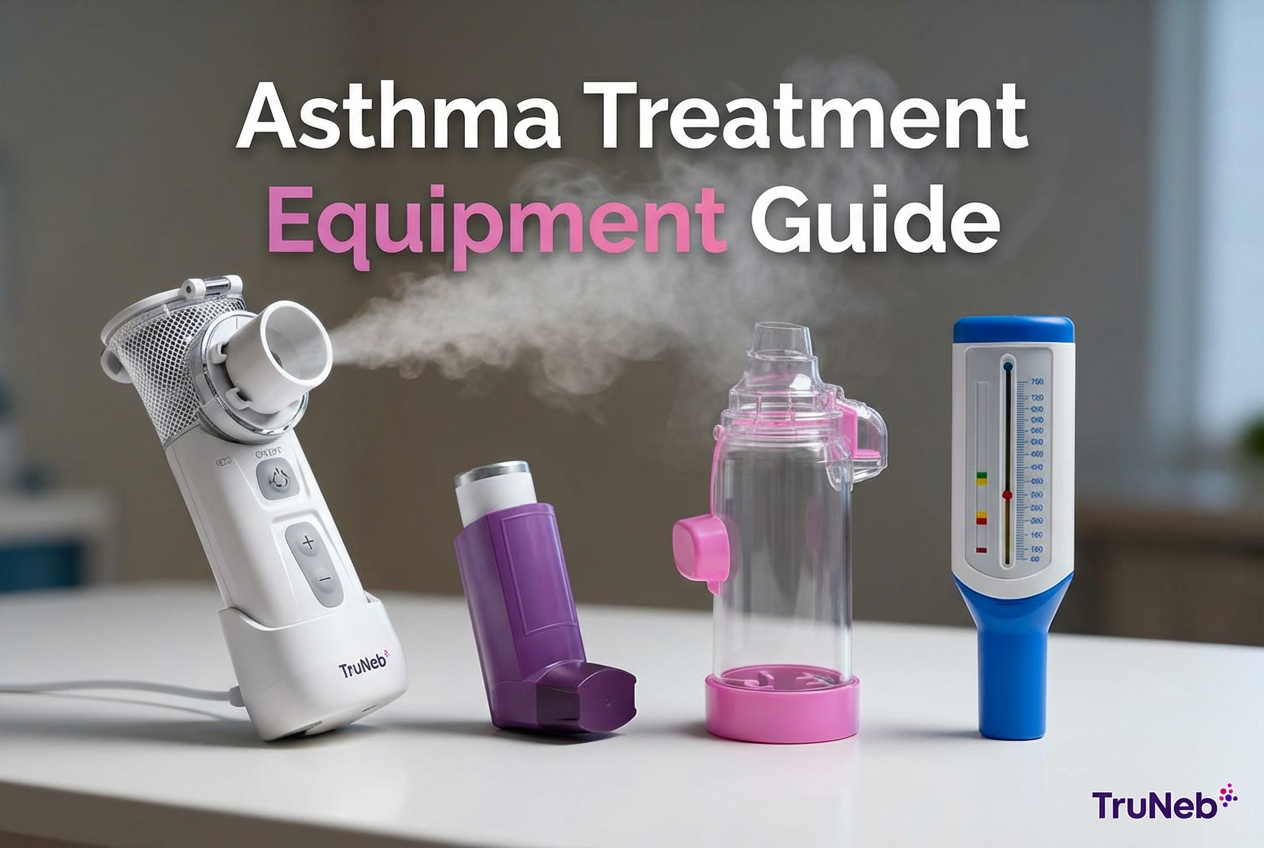On this page
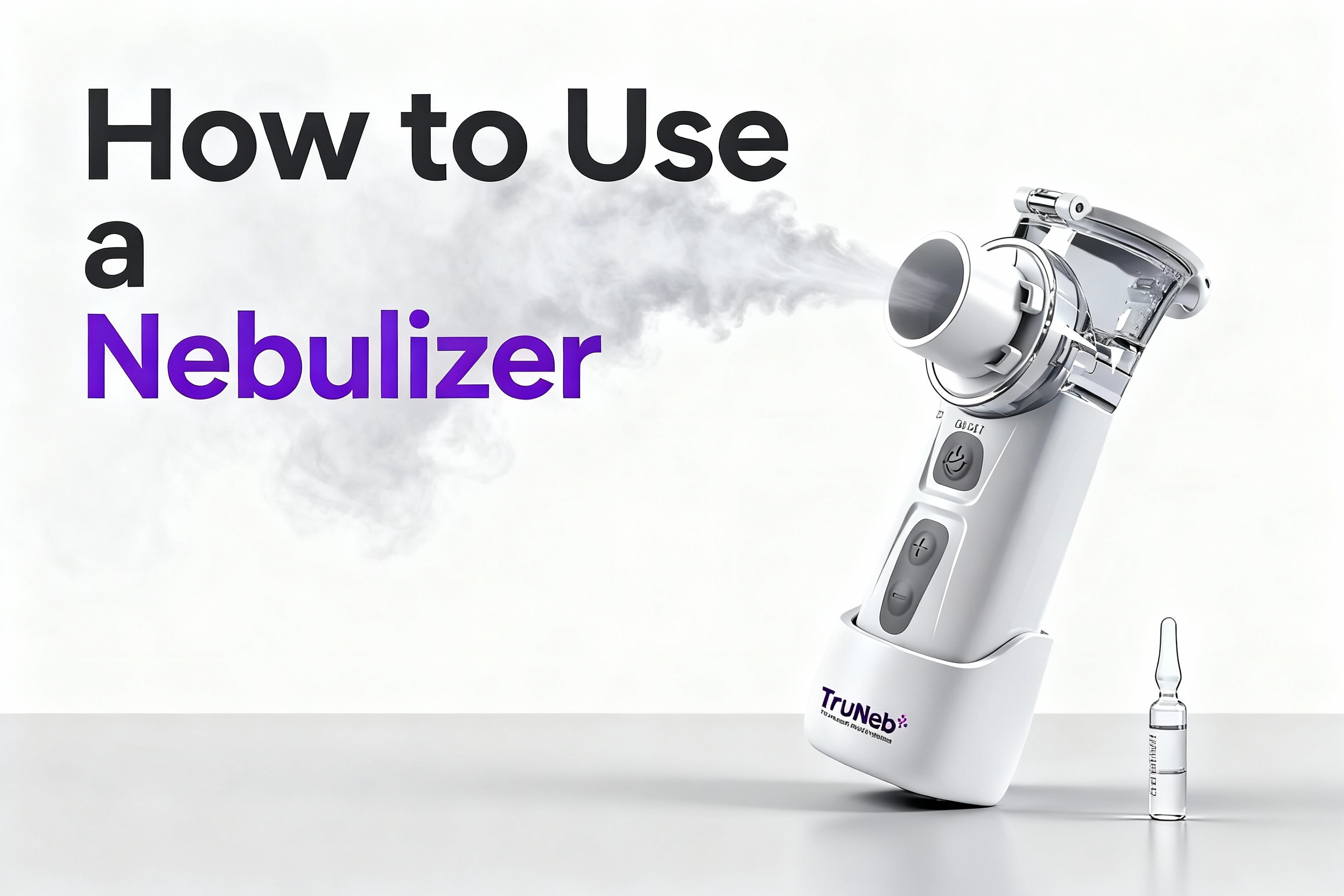
What Is a Nebulizer and Who Needs One?
A nebulizer is a small machine that turns liquid medicine into a fine mist you can breathe into your lungs. People use nebulizers for asthma, COPD, bronchitis, cystic fibrosis, and other lung conditions when inhalers are hard to use or when a steady mist helps more. Below, we'll show you how to use a nebulizer step by step.
A typical kit includes a compressor (the machine), a medicine cup, tubing, and either a mouthpiece or a face mask. Your doctor prescribes the medicine and tells you how often to use it. A portable mesh nebulizer like TruNeb™ can help you take treatments at home or on the go. In some countries, you'll see it spelled "nebuliser."
One-liner: A nebulizer delivers medicine as a mist so it can reach deep into your airways.
Nebulizer Equipment and Setup Preparation
Get your supplies ready:
- Compressor machine, tubing, nebulizer cup, mouthpiece or mask
- Your prescribed medication vials (or saline if directed)
- Clean hands and a flat surface
- You might see boxes labeled 'steam inhaler' — these are NOT for breathing medications.
Steps to prepare:
- Wash your hands with soap and water.
- Place the compressor on a flat, stable surface. If it’s portable, check the battery.
- Connect one end of the tubing to the compressor and the other end to the bottom of the nebulizer cup.
- Open the medicine cup, add the exact dose from the vial, and close it tightly so it doesn’t leak. Only mix saline if your doctor told you to.
- Attach the mouthpiece or mask to the top of the cup.
Check the compressor filter per the manual. A dirty filter can weaken the mist.
One-liner: Set up your nebulizer on a flat surface, connect the parts securely, and add only the medication your doctor prescribed.
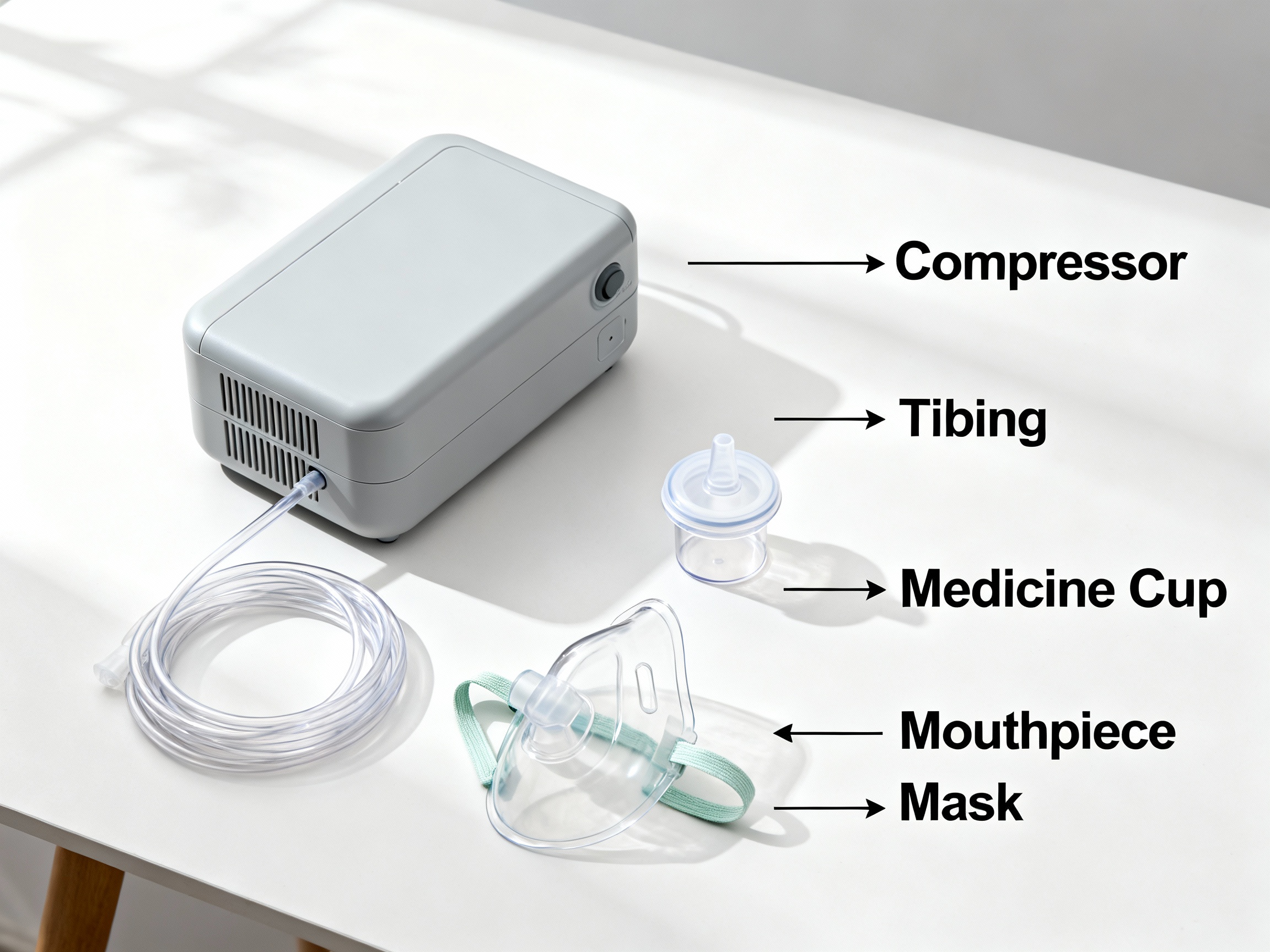
Step-by-Step: How to Use a Nebulizer
- Sit upright and make sure all parts are connected. Add your prescribed medicine to the cup and close it tightly.
- Turn on the compressor. You should see a steady mist from the mouthpiece or mask.
- Mouthpiece: place it between your teeth and seal your lips around it. Mask: fit it snugly over nose and mouth.
- Breathe in the mist through your mouth at a calm, steady pace. Every minute or so, take a deeper breath and hold it for 1–2 seconds, then exhale.
- Keep going until the cup is nearly empty and the mist slows or sputters. Most treatments take about 5–15 minutes.
- Turn off the machine. Disconnect parts and move to cleaning.
If you don’t see mist, recheck connections, confirm the filter is clean, and make sure medication is in the cup.
One-liner: Most nebulizer treatments finish in 5–15 minutes when the mist slows and the cup is nearly empty.
Breathing Techniques and Tips During Nebulization
- Breathe through your mouth when using a mouthpiece. A soft nose clip may help if you slip into nose-breathing.
- Sit upright. Good posture helps the medicine reach your lower lungs.
- Take calm breaths. Every 10 breaths, add one deeper breath and hold for a second or two.
- Using a mask (common for kids)? A snug fit helps. Kids can breathe normally.
If you feel lightheaded, pause, rest, and slow your breathing before you continue.
One-liner: Breathe through your mouth at a relaxed pace, with an occasional deeper breath to help the medicine reach your lower lungs.
| Cleaning task | After each use | Daily | Weekly |
|---|---|---|---|
| Rinse cup and mouthpiece/mask (warm water) | Yes | Yes | Yes |
| Wash with mild dish soap, rinse well | Optional | Yes | Yes |
| Air-dry on clean towel/paper towel | Yes | Yes | Yes |
| Disinfect soak (1:2 white vinegar:water, 20–30 min) | No | No | Yes |
| Check/replace compressor filter | No | Check | Replace as directed† |
| Tubing/compressor washing | Do not wash or submerge tubing or the compressor | ||
† Follow your model’s manual; replace the filter when discolored or at the interval specified. Some cups/mouthpieces are top‑rack dishwasher safe — check your instructions.
Aftercare: Cleaning and Maintaining Your Nebulizer
Right after your treatment:
- Take apart the cup and mouthpiece/mask. Do not submerge tubing or the compressor.
- Rinse parts under warm water. If using soap, rinse until no suds remain.
- Shake off water and air-dry on a clean towel. If your manual allows, briefly run the compressor (with parts attached) to blow out moisture.
Disinfect the cup and mouthpiece in a 1:2 white vinegar to water soak, then rinse and air-dry. Store parts in a clean, dry container. Replace filters as your manual recommends.
Cleaning Schedule at a Glance
See the quick table above for timing and frequency.
Why it matters: A clean nebulizer helps lower infection risk and keeps the mist strong.
One-liner: Rinse after each use and disinfect weekly to prevent bacteria and mold from growing in your equipment.
Side Effects and Safety Precautions
Common medication effects:
- You might notice jitteriness, a mild tremor, or a faster heartbeat with bronchodilators like albuterol. These usually fade.
- Steroid solutions can cause throat irritation or thrush. Rinse your mouth after steroid treatments.
Do’s and don’ts:
- Don’t add essential oils, peroxide, or non-prescribed liquids. Use only medicines your doctor ordered.
- Don’t share your mouthpiece or mask. Each person needs their own set.
- Don’t leave leftover medicine in the cup. Discard it after the session.
- Do clean after each use to prevent germs and mold.
- Do stop and rest if you feel dizzy. If symptoms are severe, contact your doctor.
⚠️ Seek emergency care if you have severe trouble breathing, blue or gray lips or fingernails, chest pain, confusion, or if your rescue treatments stop working.
If your symptoms don’t improve, or you need treatments more often than prescribed, talk to your doctor.
One-liner: The device delivers medicine; most side effects come from the medication, not the machine.
Frequently Asked Questions
Tap or click a question below to see the answer:
With a mouthpiece, breathe through your mouth at a calm pace; a soft nose clip can help if you slip into nose-breathing. With a mask (often for children), normal relaxed breathing works if the fit is snug.
Most sessions take about 5–15 minutes. You are done when the mist fades and the cup is nearly empty.
Adults and older kids often get more medicine to the lungs with a mouthpiece. Younger children or anyone who cannot seal their lips well may do better with a mask.
Use it only as prescribed. If you need it more often than your plan calls for, contact your doctor.
It can help. Nebulized saline and bronchodilators can loosen mucus and open airways so you can cough it out. The nebulizer is not a vacuum; it helps your lungs do the clearing.
If you only have a simple cold and no wheezing, you usually do not need nebulizer treatments. Some doctors recommend saline mist to loosen chest mucus or if a cold triggers asthma; ask your doctor before using anything new in your nebulizer.

